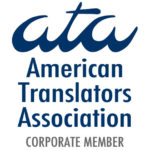By Swapna Kasturi
Hispanic America or Spanish America refers to the region which constitutes American countries that are inhabited by Spanish speaking people. There are several places that are dominated by Spanish speaking populations and as such, a common thread runs among these inhabited places and Spain mainly because of the fact that all these places were formerly colonies of Spain. In almost all these countries, the pre-dominant language is either only Spanish or Spanish along with several other local languages. The countries that make up Hispanic America are Argentina, Belize, Bolivia, Chile, Cambodia, Costa Rica, Cuba, Dominican Republic, Ecuador, El Salvador, Guatemala, Honduras, Mexico, Nicaragua, Panama, Paraguay, Peru, Puerto Rico, Uruguay and Venezuela.
Hispanic Americans are related to Spain and comprise 15.1% of the total population of the United States of America. In fact, Hispanic Americans constitute the second largest ethnic group in the U.S. Hispanic Americans are the second fastest growing community in the U.S and have been around since 1565 when St. Augustine in Florida was founded. The term “Hispanic” was first used by the U.S government, during the Presidency of Richard Nixon and has stayed on from then. From 1950, when there were less than 4 million Hispanics to today, when the total number of Hispanics in the U.S is 45 million, Hispanic Americans have come a long way. Hispanic Americans have emerged from the shadows and proved themselves as a force to reckon with.
Their contribution to America is outstanding. Hispanics have actively contributed and participated in the American War of Independence, Civil War, Cuban War, World War I and II and the Vietnam War. They have also made major contributions to the fields of art, science, entertainment, politics, business, fashion, literature, technology and sports. Most of the Hispanics can speak Spanish. Another aspect that connects all Hispanic Americans is the problems that they face. Common issues such as education, poverty, unemployment, Hispanophobia have been and are faced by Hispanics. Hispanic Americans are working very hard to eliminate all these problems and an active improvement in trends concerning these issues can be observed. Thus, Hispanic Americans will definitely pave the way to a brighter future and contribute their part in strengthening and improving America’s resources, finances and culture.




